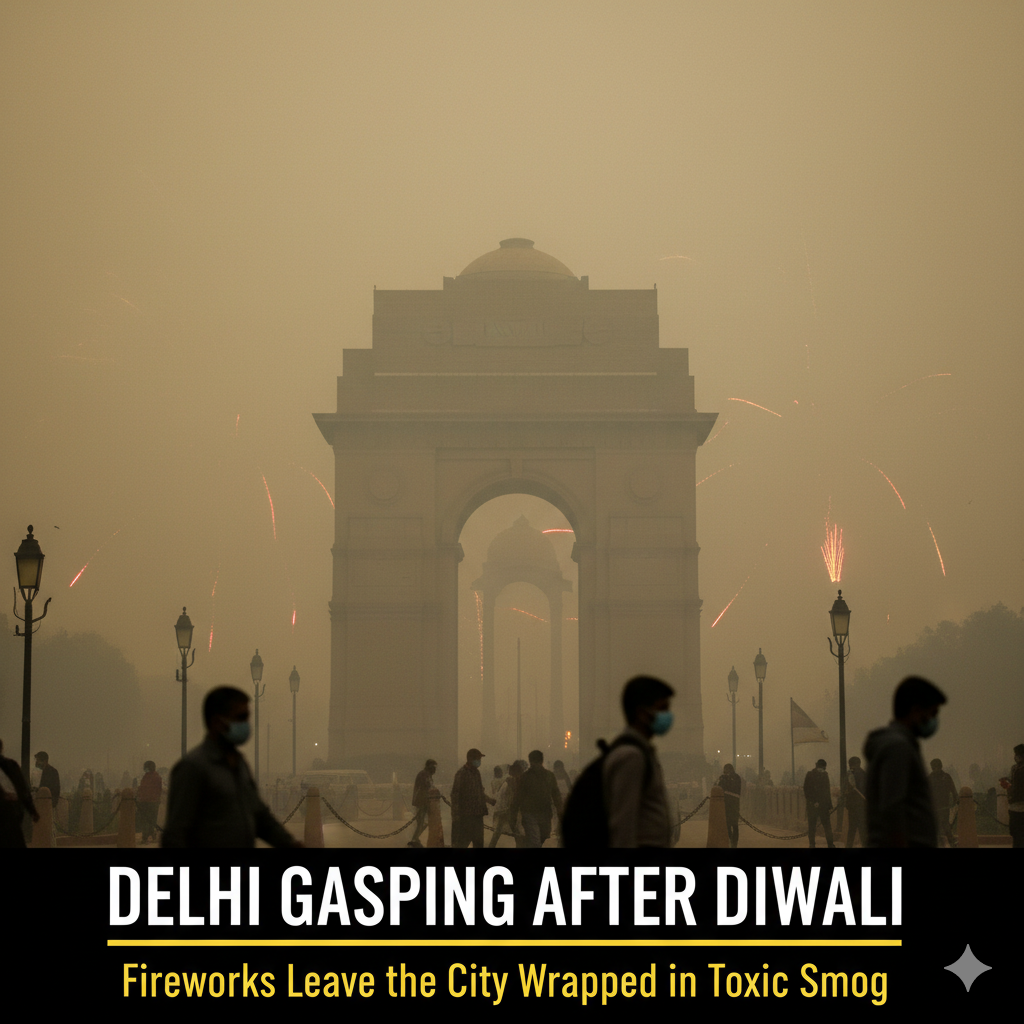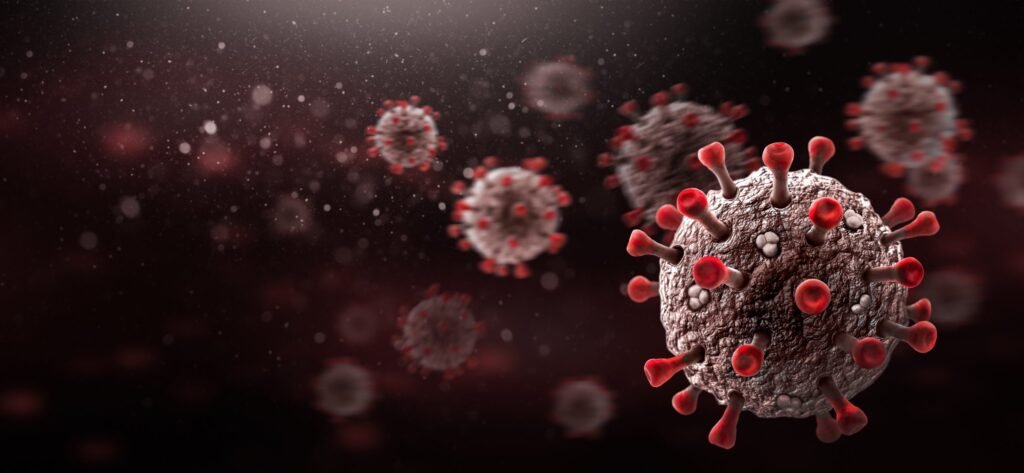
Quick Highlights
- Delhi’s air quality plummeted to “severe” levels after Diwali, with many areas recording AQI above 450.
- Firecracker smoke, vehicle emissions, and cold, stagnant air trap pollutants close to the ground.
- Hospitals report more cases of coughing, breathlessness, and eye irritation.
- Authorities advise residents to stay indoors and avoid morning walks.
What Happened
The morning after Diwali, Delhi woke up under a thick blanket of smoke. Despite repeated appeals and partial bans on fireworks, loud bursts and colourful crackers lit up the sky across the city on Diwali night. By dawn, the air had turned heavy and hazy with the city’s overall AQI shooting past 450 in several areas like Anand Vihar, Jahangirpuri, and Wazirpur.
To put it simply, Delhi’s air was more than eight times worse than what the World Health Organisation considers safe to breathe.
Where It’s Hitting the Hardest
The worst-affected areas are densely populated parts of Delhi and the NCR, Anand Vihar, Bawana, and Ashok Vihar consistently topped the pollution charts. Even the “cleaner” regions like South Delhi and Noida saw AQI between 300 and 400, levels that are unsafe for everyone, not just those with existing conditions.
Why This Happened
Experts say this was a perfect storm.
- Firecracker smoke — Diwali celebrations caused an overnight explosion of fine dust and metal particles.
- Vehicle emissions — Traffic surged as people travelled and gathered for festivities.
- Weather conditions — Low wind speed and falling temperatures trapped all that smoke close to the ground instead of letting it disperse.
- Crop residue burning in nearby states like Punjab and Haryana added to the mix, though officials say this year’s farm fire numbers were slightly lower.
How It’s Affecting Health
Hospitals across Delhi reported a noticeable rise in patients with respiratory issues. Many residents, especially children and the elderly, complained of headaches, throat irritation, and breathing problems.
Doctors say:
- PM2.5 particles, the fine dust you can’t see, can enter deep into the lungs and bloodstream.
- Prolonged exposure can lead to chronic bronchitis, asthma, and even heart disease.
People with pre-existing conditions are advised to stay indoors, use N95 masks if they must go out, and avoid morning walks until the air improves.
What Authorities Are Doing
The Delhi government has reactivated its Graded Response Action Plan (GRAP), limiting construction, stopping diesel generators, and restricting truck entry into the city. Schools have been advised to avoid outdoor activities, and citizens are being urged to avoid bursting any remaining crackers.
The Commission for Air Quality Management (CAQM) said it expects improvement only if wind speeds increase or light rain clears the stagnant air.
What You Can Do
- Avoid early morning or late-night outdoor exercise.
- Keep windows closed and use air purifiers if possible.
- Stay hydrated and use masks when stepping outside.
- If you have asthma or heart problems, keep your medicines handy and consult a doctor if symptoms worsen.
The Bigger Picture
Delhi’s post-Diwali air crisis isn’t new; it’s a yearly reminder of what happens when celebration collides with pollution. While fireworks last a night, their effects linger for days. Cleaner celebrations, stronger enforcement, and public awareness are the only real ways to stop the city from choking every winter.
Stay connected with Unwires.com for more stories, guides, and inspiration. After all, every great journey begins with a spark — and Unwires is that spark.


